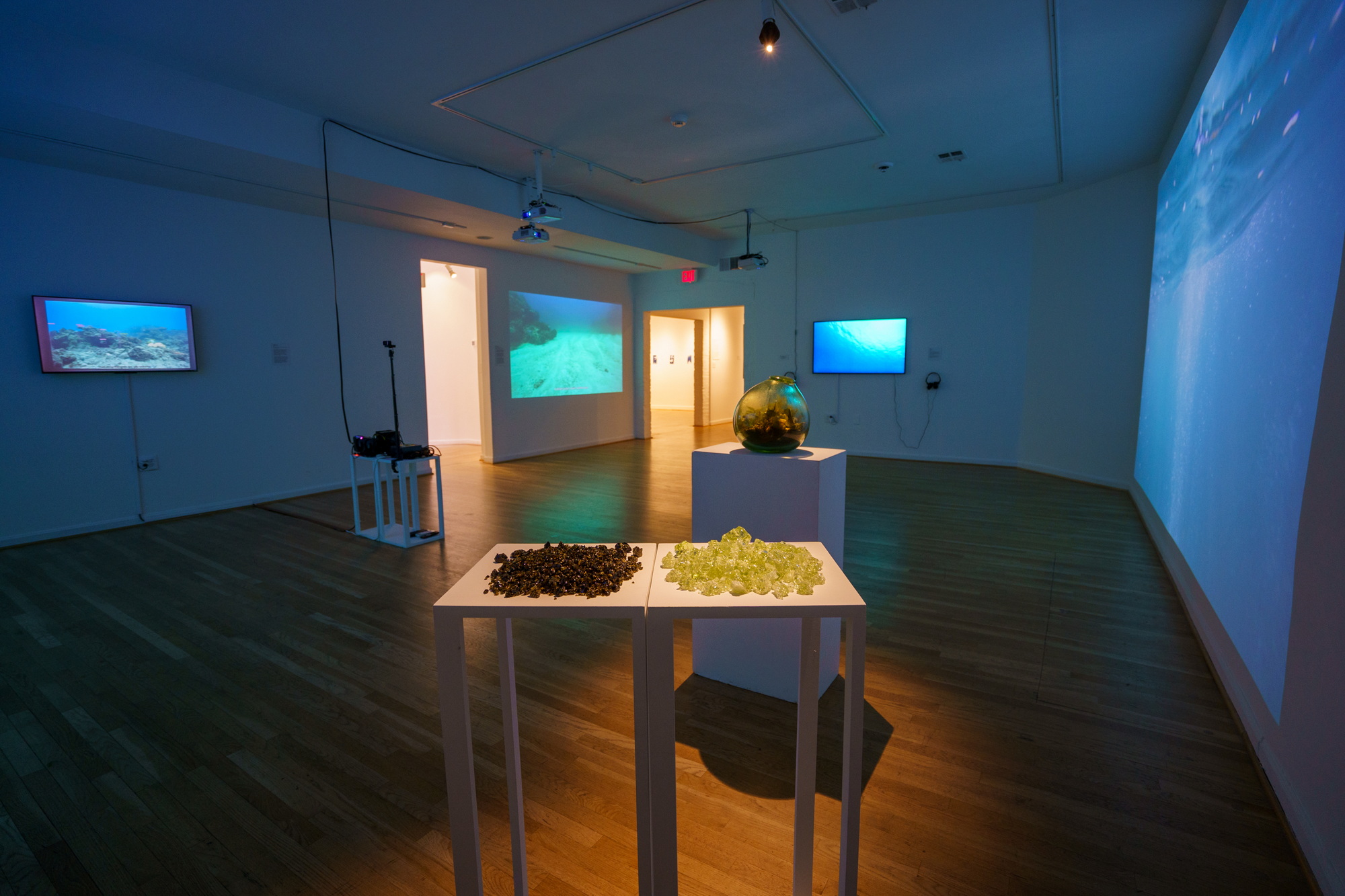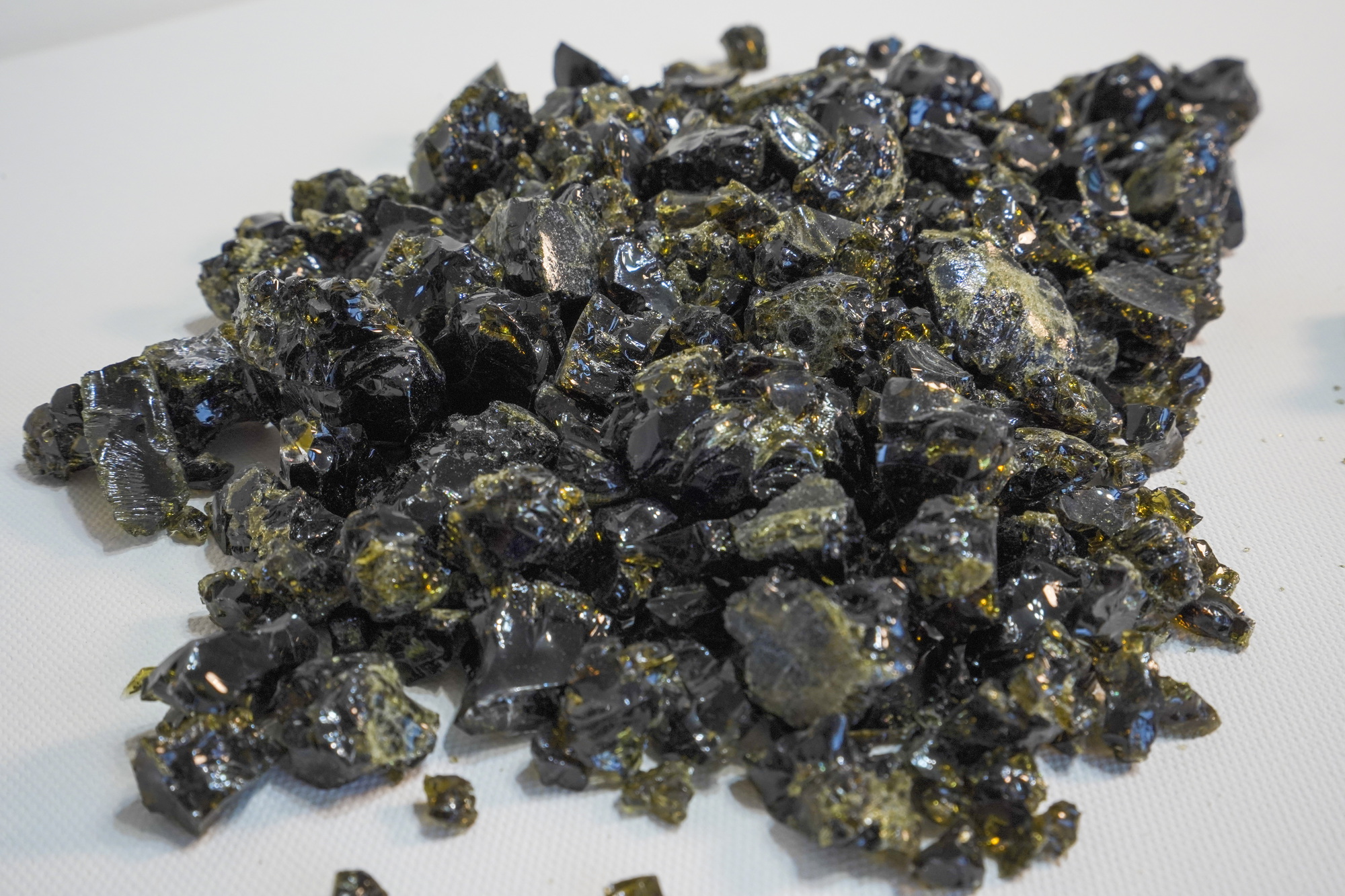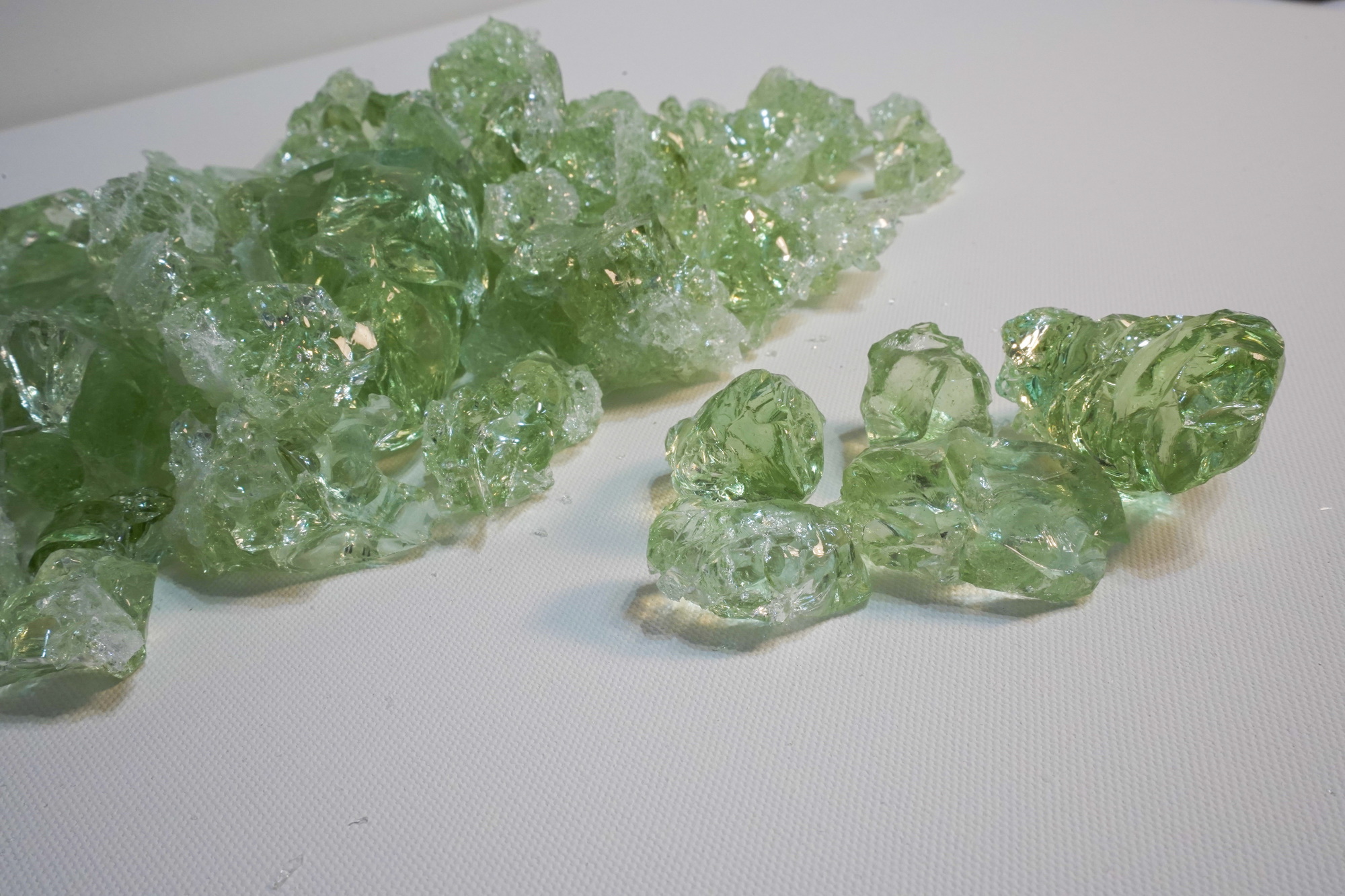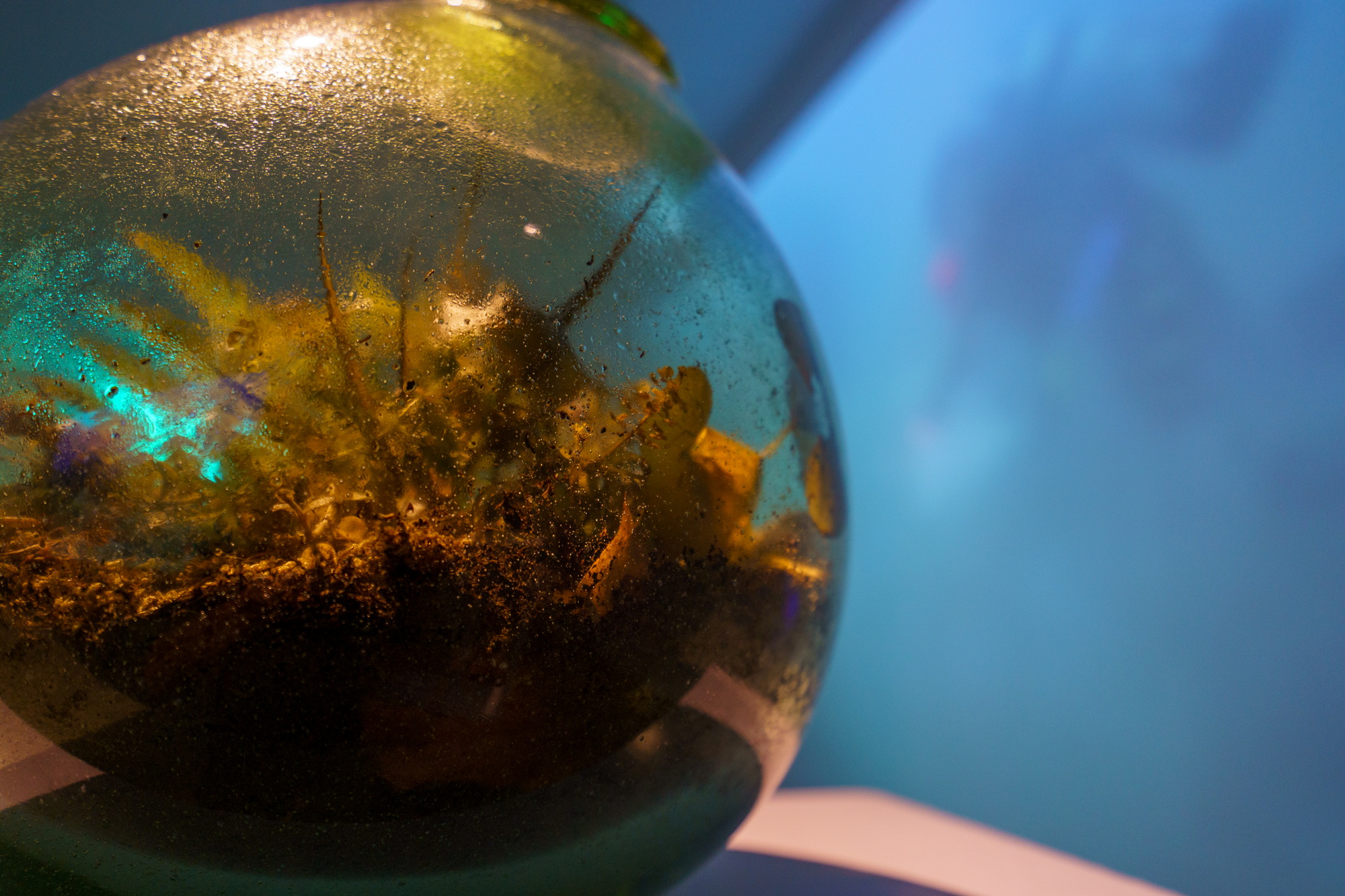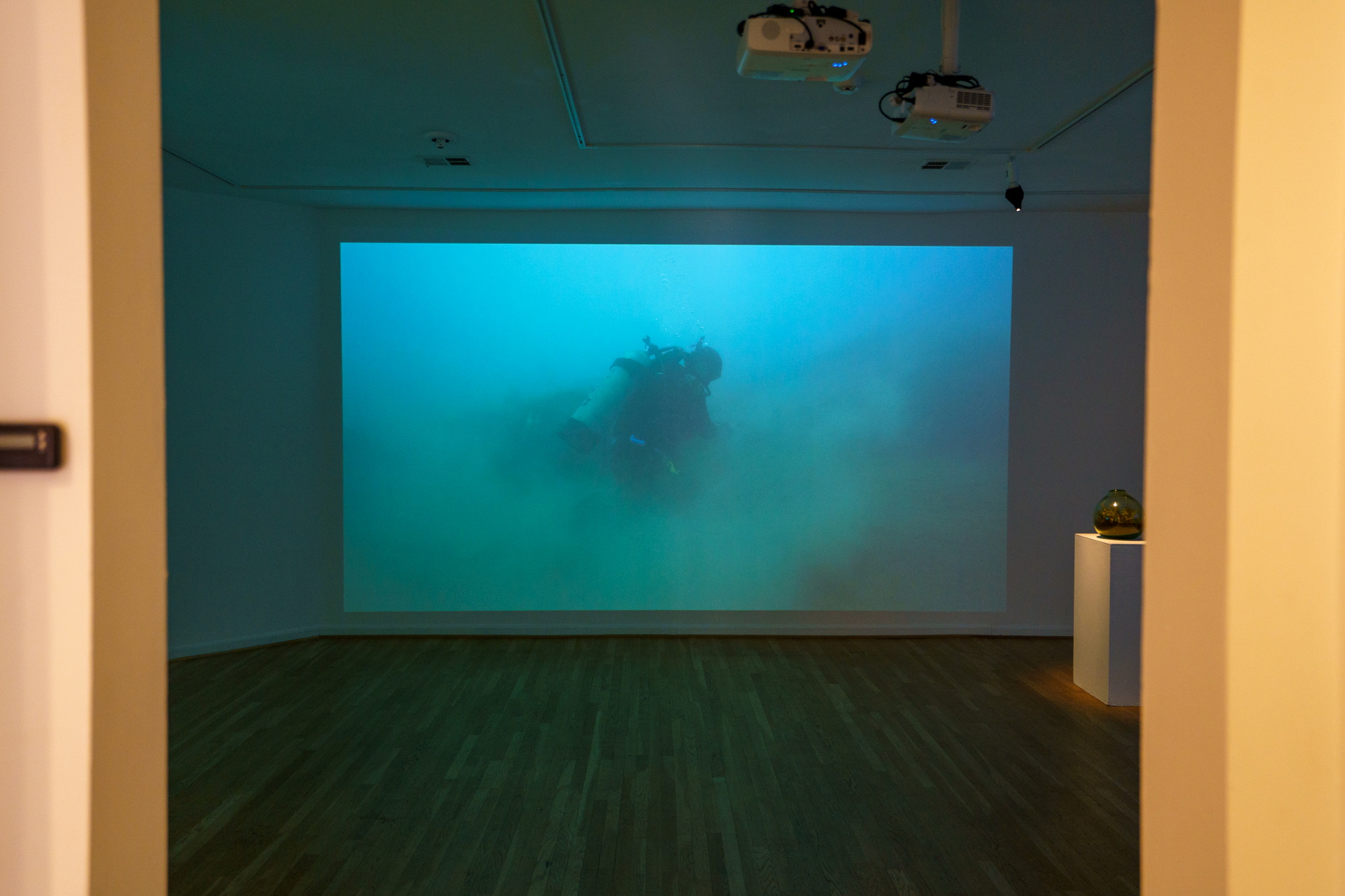The Unreached Surface
Single-channel video, glass, ecological bottle
2025
In prehistoric times, before the invention of writing, only durable materials such as stone tools, pottery, and bones were left behind at archaeological sites. The absence of written records renders much of prehistory a mystery. Prehistoric people fired earth into vessels, transforming soil into containers for daily life. Extending this act of transformation, The Unreached Surface features a group of divers descending 20 meters below sea level to collect non-cohesive seabed sand. Through high-temperature melting, the sand is transformed into glass and then blown into sealed ecological bottles.
Each bottle contains a self-sustaining micro-ecosystem. Through the glass surface, one can observe the circulation of plants, air, and water. Yet to touch anything inside would require breaking the vessel—destroying its delicate, closed equilibrium.
The seabed sand symbolizes a potential future surface of the Earth. In the artwork, it appears in a transparent form—visible, yet unreachable. The ecological bottle is both a living object and a temporal container inaccessible to intervention. It holds not just moisture and plants, but also a speculative future in which this sand becomes land two thousand years from now. The work constructs a space of viewing, approaching, and loss—echoing Deleuze’s idea of the fold-crystal: a progression of time, crystallized into an experience that is perceivable yet impenetrable.
Divers: Te-Mao Lee, Kuan-Cheng Chang, Hae-Jong Wu, Jia-Wei Liou, Jhong-Yuan Syu
